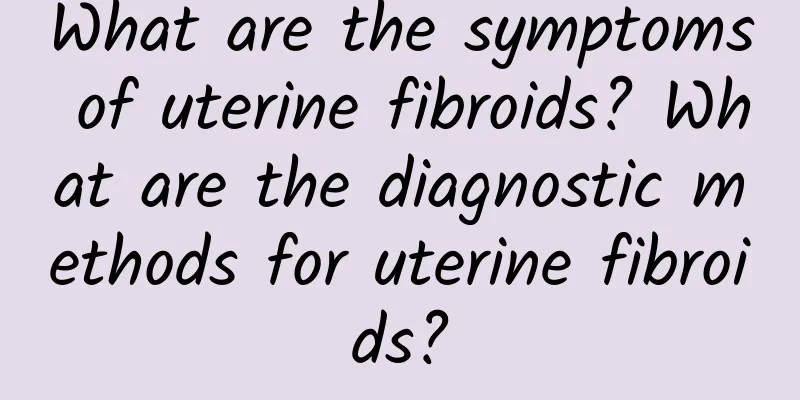What are the symptoms of uterine fibroids? What are the diagnostic methods for uterine fibroids?

|
Symptoms Most uterine fibroids, even if they are large, usually have no symptoms. When symptoms do occur, they are often as follows: (1) Menstrual changes: increased bleeding, prolonged menstruation or shortened menstrual cycles, menstrual pain (abdominal cramps), non-menstrual bleeding, anemia (caused by excessive bleeding) (2) Pain: Pain in the abdomen or back (usually dull, but sometimes severe or even sharp), sometimes pain during sexual intercourse (3) Compression symptoms: difficulty urinating or increased urination frequency, constipation, rectal pain or difficulty in bowel movements, abdominal cramps (4) Miscarriage and infertility These symptoms may also be caused by other problems. Therefore, if you have any symptoms, you should see your doctor promptly. Uterine fibroids may be first discovered during a routine pelvic exam. There are a number of tests that can provide detailed information about uterine fibroids. (1) Ultrasound: Sound waves create an image of the uterus or pelvic organs. (2) Hysteroscopy: A long, thin device (hysteroscope) is placed through the vagina and cervix (opening to the uterus) to help the doctor see some fibroids inside the uterine cavity. (3) Hysterosalpingography: This is a special X-ray that can detect abnormal changes in the size and shape of the uterus and fallopian tubes. (4) Laparoscopy: A thin, long device (laparoscope) is inserted through a small incision below the navel or through the navel to help the doctor see the fibroids on the outer surface of the uterus and some fibroids between the uterine muscle wall. Hysteroscopy or laparoscopy is sometimes combined with For the diagnosis of fibroids. Magnetic resonance imaging tests, such as magnetic resonance imaging (MRI) and CT scans, are sometimes used to diagnose fibroids, but these tests are rarely necessary. Fibroids are sometimes found when these or other tests are being used to diagnose some other problem or condition. Some tests may help check how fast a fibroid is growing. |
Recommend
Is it possible that an ectopic pregnancy can be contagious?
Is ectopic pregnancy contagious? This is a questi...
How to treat chronic left adnexitis
Treatment for chronic left-sided adnexitis includ...
Can patients with cervical precancerous lesions eat fish?
Patients with cervical precancerous lesions will ...
What equipment do you need to hunt fat in summer?
Summer is approaching again, and it is also the t...
Will the embryo be expelled by itself in conservative treatment of ectopic pregnancy?
After conservative treatment of ectopic pregnancy...
Moxibustion for the treatment of hyperprolactinemia
Moxibustion is currently a key method for treatin...
What are the common symptoms of ectopic pregnancy?
Pregnancy is a great joy for married women, but i...
Understanding the hazards of pelvic effusion
The pelvic cavity is the cradle for a woman to nu...
How to treat uterine fibroids? What are the common misunderstandings in the treatment of uterine fibroids?
Although uterine fibroids are a common disease in...
Can experts tell me whether antibiotics can treat cervical erosion?
Patients with cervical erosion all know that anti...
Some easily overlooked causes of cervical erosion
Cervical erosion is a killer of women's healt...
What are the external symptoms of threatened miscarriage?
What are the external manifestations of threatene...
Before running, it only takes 60 seconds to develop the core muscles
So strange! Why does the body always sway from si...
Hyperprolactinemia prevention knowledge
Hyperprolactinemia is a very common disease that ...
Symptoms of vulvar leukoplakia in women
Is vulvar leukoplakia a gynecological disease? Ma...









